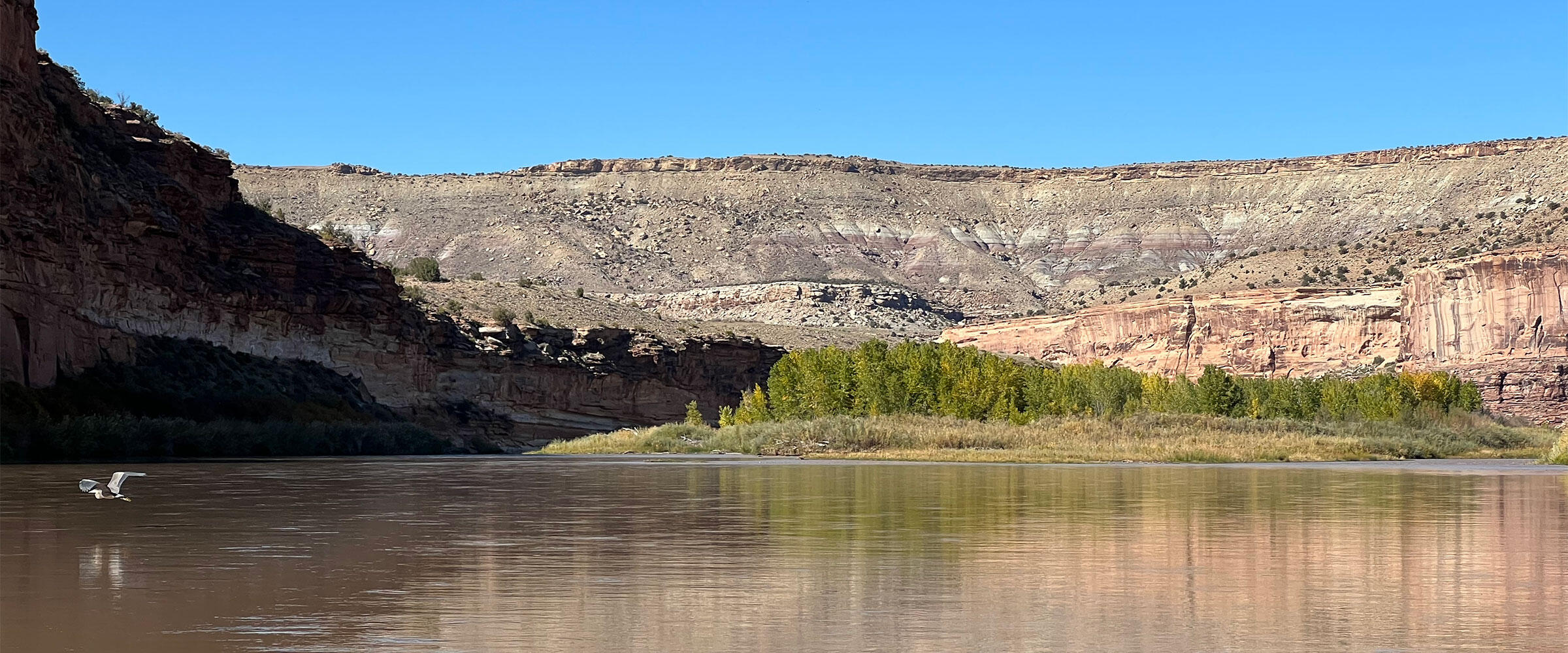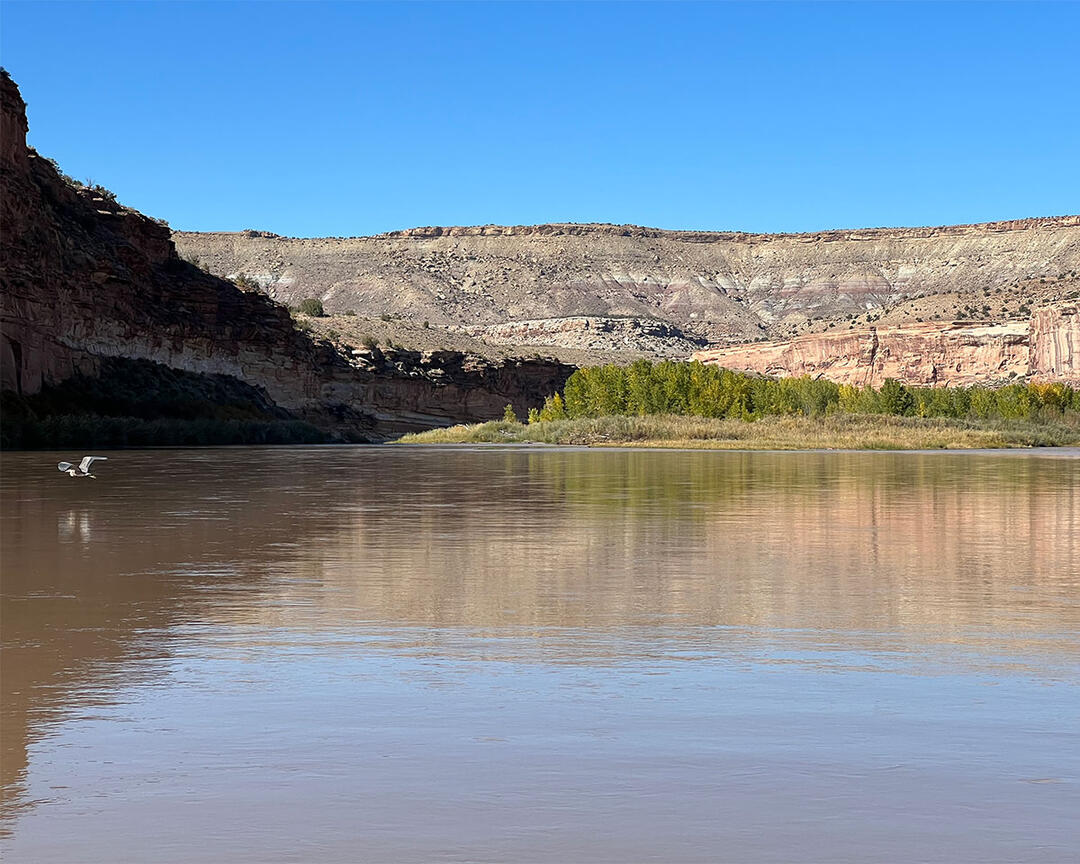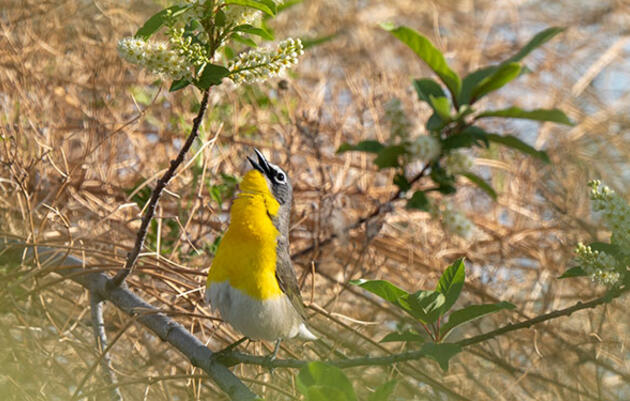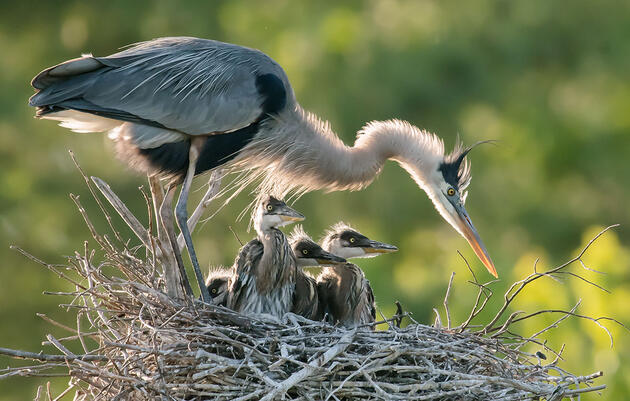Este artículo está disponible en español.
Water connects us and supports the lives of every bird and Coloradan every day. It's time for action for Colorado's birds and people. People tend to evade challenging work in water until a crisis. Now is an opportune time to lean in and work for holistic water solutions that sustain a more water-resilient Colorado to support our birds, fish, other wildlife, rivers, and all people—equally.
Ironically, water stress can bring hope. Pressure can sharpen focus towards innovative actions to protect what is precious to us. The draft Colorado Water Plan update is an opportunity to engage in our sustainable water future—for all of us. After intense work by Colorado Water Conservation Board (CWCB) staff and directors, the draft plan made a public debut on June 30th and is open for comment through September 30th. The plan will be finalized in January 2023 and direct Colorado's water priorities for ten years.
Coloradans shape our water planning and management. A diversity of voices, needs, and knowledge must be integrated into this water plan update process. Our solutions are stronger with diversity and collaboration. Understanding how, when, and where to engage in water is essential. In 2015, Audubon contributed thousands of public comments and technical input to the completion of the inaugural water plan. We will again call on you, the broad Colorado Audubon network, to engage in this critical water plan update. In the coming weeks, help us define this moment for birds, rivers, and people.
Water Plan Orientation
Audubon thanks and acknowledges the sizeable efforts by the Colorado Water Conservation Board staff and directors in creating this draft update. The draft updated plan is half the size and a very different water plan than 2015. There’s a new format based on four pillars of work: Thriving Watersheds (Cuencas Prósperas), Resilient Planning (Planificación Resiliente), Vibrant Communities (Comunidades Dinámicas), and Robust Agriculture (Agricultura Robusta). All four of these areas are integrated and must lift together.
The updated water plan calls on Coloradans to actively contribute to our water-resilient future through participating in any of the approximately 50 identified partner actions. Colorado is a local control state. So, local participation is critical to the health of Colorado's local river systems and economies. The updated plan also details 50 actions that state agencies will take to help advance local water projects and initiatives.
The plan update also reflects the very real and everyday impacts of climate change—like aridity, wildfires, and floods—on Colorado’s water resources. Over the majority of the last ten years, Colorado has been racking up superlatives like "hottest," "driest," and sadly, more than one "historical wildfire" title.
Audubon encourages our membership to track down where your water comes from, commit to an expanded water stewardship ethic (see Water '22 or Habitat Hero for ideas), and read about your basin as well as chapter six in the draft updated water plan.
Here are some top highlights from our review focused on the “Thriving Watersheds” and “Resilient Planning” sections of the draft plan.
Top Three Likes
-
Resiliency is a core pillar in the draft plan. We all depend on watersheds and natural systems for delivery and eco-services to access reliable, clean water. Wildlife and people must be able to respond to what nature gives us. Birds, other wildlife, and all people must be able to respond to and sustain themselves in both scarcity and abundance of water—this is the core of resilience to climate change shocks.
-
The draft plan acknowledges the need for and inclusion of river health assessment frameworks, a stream construction guide, nature-based solutions, green infrastructure strategies and techniques, and water-dependent native species data coordination and access. Resilience requires a baseline understanding of our watershed and river systems to support sustainable and positive management. Rivers and river health are a crucial part of how we meet our water challenges in Colorado. We need to understand river health conditions more and easily access data to manage and restore this invaluable resource nimbly. Audubon thanks the CWCB staff for the many meetings discussing the importance and inclusion of these topics.
-
The draft plan also begins down the path of how to engage everyone working towards equity, diversity, and inclusivity in the Colorado water space. The decisions we make about water impact everyone. A diversity of voices representing a diversity of needs strengthens Colorado's water decisions. The draft update contains leaps forward from the 2015 plan with more substantive diversity content regarding the inclusion of the Water Equity Task Force principles. This includes translating the entire plan and factsheets into Spanish for better language equity, and broader inclusion of the Ute Mountain Ute and Southern Ute Indian tribes in the plan's vision and actions. The advancements in the water equity, diversity, and inclusivity space are notable, while considerable work in actualizing this critical work must still follow. "Connectivity must begin with identifying those most vulnerable around us, building their capacity to engage, and assuring that their needs are prioritized. A region, after all, is only as strong as its most vulnerable communities," notes the 2020 California Water Resilience Portfolio.
Top Three Needs
-
Coloradans know we need to act on behalf of water resilience and act quickly. There is an urgency to start implementing water security solutions at scale and take advantage of once-in-a-generation federal funding. Although the draft plan sets an ambitious scope of activity and vision, how will we track work in a transparent and publically accessible way? What are the timelines for achieving this critical work?
-
The need for more traditional storage is mentioned numerous times in the draft plan. Colorado's current reservoirs are often far below their capacities. Building more dams to hold questionable water supply is not a sustainable solution to the water crisis. Instead, we need balanced strategies for innovative storage opportunities looking at forest health, pre-wildfire watershed readiness, and creativity to complement storage with nature-based solutions like wet-meadow and wetland restoration. These strategies increase wildlife habitat, improve water quality and cycling, lift wildfire preparedness and recovery, increase overall river health, and provide recreational opportunities for local communities and economies.
-
River health is a key component of Colorado's water resilience. In the draft plan, there is a high priority on watershed-scale work and less on the scale of streams and rivers. The plan needs to include more weight on statewide river health, as Colorado's river-related recreation is a major economic driver for the state, with more than $10 billion spent each year and nearly $19 billion in overall economic output. Birds, recreation, and agriculture all depend on healthy rivers flowing from resilient watersheds. All of us rely on healthy river ecosystems to thrive.
Colorado's future depends on water and each of us—birds and people—is connected by it. Even if you are not a water right holder, we are all responsible for engaging in the Colorado Water Plan update and contributing to the stewardship of our water resources. When we understand the connections—where our water comes from and how much we depend upon it—we value water for what it is: life and sustainability for people and nature. Watch for guided water plan engagement opportunities from Audubon. Kingfishers, American Dippers, Snowy Egrets, and Colorado's water-resilient future depend on you to lean in and participate. Thank you in advance for your engagement in the update of the Colorado Water Plan.








